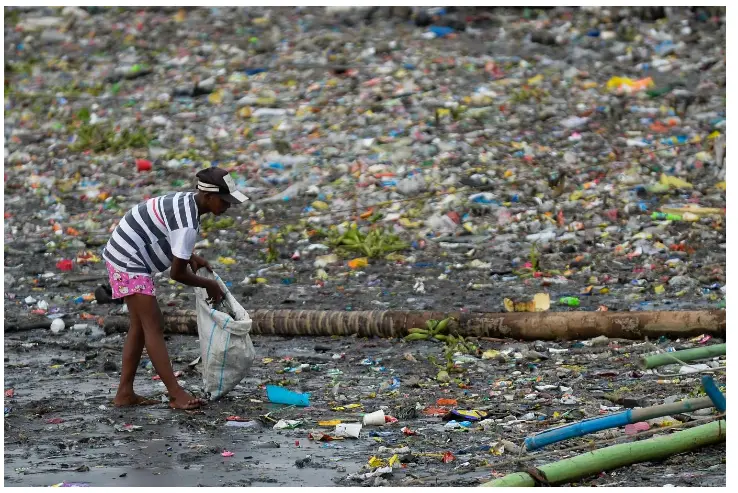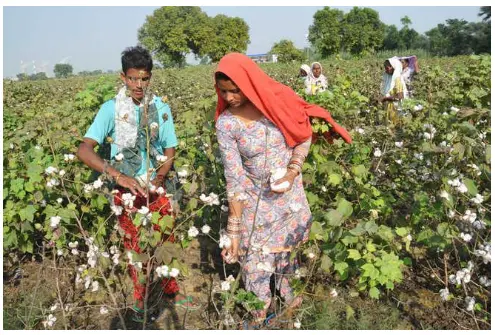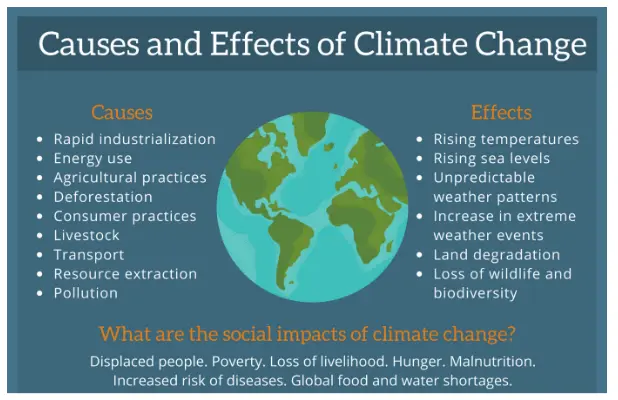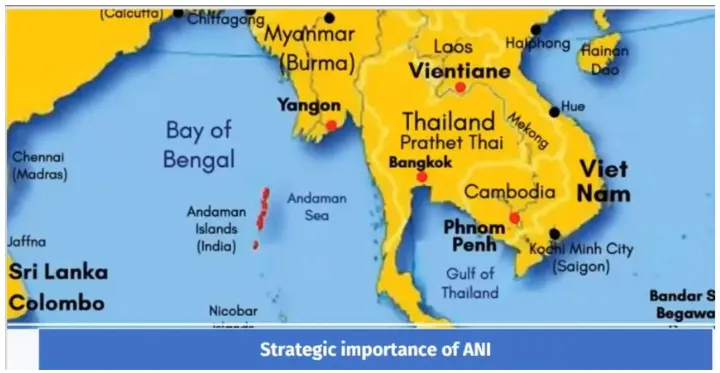Tuesday, 23rd April 2024
India – Australia Bilateral Relationship
In News: In its recently released 2024 National Defence Strategy (NDS), Australia has affirmed that India holds a position as one of its foremost security allies.
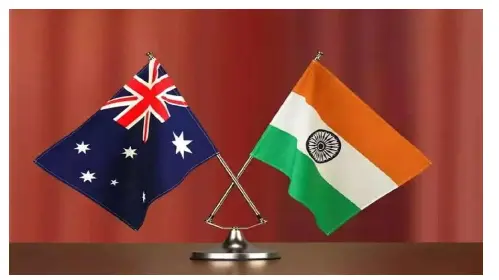
Historical Background of India – Australia Bilateral Relationship
- The historical ties between India and Australia trace back to the early days of European settlement in Australia in 1788.
- Trade between the two nations was facilitated by the British East India Company through Kolkata, particularly with the penal colony of New South Wales.
- Diplomatic relations between India and Australia were established during the pre-Independence period, with the opening of the India Trade Office in Sydney in 1941.
Progression to Comprehensive Strategic Partnership
- India and Australia elevated their bilateral relationship from a 'Strategic Partnership' in 2009 to a Comprehensive Strategic Partnership (CSP) in 2020.
- Various institutional mechanisms have been established over the years to foster bilateral cooperation, including high-level visits, annual meetings of Prime Ministers, Foreign Ministers' Framework Dialogue, and 2+2 Defence and Foreign Ministers' Dialogue, among others.
Bilateral Trade Between India and Australia
- India stands as Australia's sixth largest trading partner, with bilateral trade experiencing significant growth.
- Trade between the two countries surged from US$ 22.2 billion in 2021 to US$ 31.4 billion in 2022, marking a remarkable 41% increase.
- Notably, India's exports to Australia rose by 38% to US$ 8.7 billion, while Australia's exports to India increased by 42% to US$ 22.5 billion.
- Key exports from India to Australia include refined petroleum, medicaments, pearls & gems, and made-up textile articles, while Australia exports items such as coal, copper ores & concentrates, and education-related services to India.
Civil Nuclear Deal
- A Civil Nuclear Cooperation Agreement was inked between India and Australia in September 2014.
- This agreement allows Australian uranium mining companies to fulfill contracts for supplying uranium to India for civil purposes.
Indian Community in Australia
- The Indian community in Australia has been growing steadily, numbering approximately 976,000 according to the 2021 Census.
- India ranks as the second largest migrant group in Australia after England, with a constant influx of students and tourists from India contributing to its significance.
IndAus Economic Cooperation and Trade Agreement (ECTA)
- In 2022, India and Australia signed a bilateral Economic Cooperation and Trade Agreement (ECTA).
- This agreement marks India's first trade pact with a developed country in over a decade, since the last Free Trade Agreement (FTA) signed with Japan in 2011.
- Encompassing various areas of cooperation, the ECTA covers trade in goods, services, technical barriers, customs procedures, pharmaceutical products, and cooperation in other sectors, bolstering economic ties between the two nations.
Source: TH
Pulse Production in India
In News: In fiscal 2024, India witnessed an 84% surge in pulses imports, marking a peak not seen in six years.
India's Pulses Production Status
- India holds the position of the largest producer, consumer, and importer of pulses globally, with 25%, 27%, and 14% shares respectively.
- Pulses cover around 20% of the total foodgrains area and contribute 7%-10% to the overall foodgrains production in India.
- The top five pulses-producing states in India are Madhya Pradesh, Maharashtra, Rajasthan, Uttar Pradesh, and Karnataka.

Figure: Pulse Producing Areas in India
India's Pulses Import Status
- In the fiscal year 2023-24, India imported 4.65 million metric tons of pulses, marking a notable increase from 2.53 million tons in the previous year.
- The import value surged by 93% to USD 3.75 billion, with red lentil imports, primarily from Canada, doubling to 1.2 million tons.
- Duty-free imports starting from December contributed to heightened imports of yellow peas from Russia and Turkey.
- South Asian nations, including India, typically import pulses from countries such as Canada, Myanmar, Australia, Mozambique, and Tanzania.
Characteristics and Significance of Pulses
- Pulses thrive in temperatures ranging between 20-27°C, require rainfall of about 25-60 cm, and flourish in sandy-loamy soil.
- They serve as vital sources of protein in vegetarian diets and aid in soil fertility restoration by fixing nitrogen.
- These crops are cultivated throughout the agricultural year, with rabi pulses (contributing over 60%) including gram, chana, masoor, and arhar, and kharif pulses encompassing moong, urad, and tur.
Initiatives to Boost Pulses Production in India
- National Food Security Mission (NFSM)-Pulses: Operated in 28 states and 2 union territories, this initiative includes interventions such as farmer assistance, cropping system demonstrations, and seed distribution.
- Pradhan Mantri Annadata Aay SanraksHan Abhiyan (PM-AASHA) Scheme: Launched in 2018, it consists of price support, deficiency payment, and private procurement components to bolster farmers' incomes.
- ICAR's Role in Research and Variety Development: The Indian Council of Agricultural Research (ICAR) focuses on basic and strategic research, collaborative efforts with State Agricultural Universities, and the development of high-yielding pulse varieties.
Reasons Behind India’s Dependence on Pulses Imports
- Shifting Cropping Patterns: Farmers have increasingly favored water-intensive cereals like rice and wheat over pulses due to consumption demands and government incentives.
- Lower Profitability: Pulses often yield lower returns per hectare compared to cereals, dissuading farmers from their cultivation.
- Climate Challenges: Erratic rainfall and droughts adversely affect pulse production, which predominantly relies on rain-fed agriculture.
- Limited Technological Advancements: Research and development in pulses lag behind cereals, impacting productivity and susceptibility to diseases.
Strategies for Ensuring India’s Self-Sufficiency in Pulses
- Boosting Domestic Production: Providing competitive minimum support prices, subsidies, and crop insurance schemes tailored for pulses.
- Promoting Crop Rotation: Encouraging farmers to reintegrate pulses into their cropping patterns for soil health and sustainability.
- Developing High-Yielding Varieties: Investing in research for drought-resistant pulse varieties and promoting their adoption.
- Improving Irrigation Infrastructure: Expanding irrigation facilities and promoting water-efficient techniques like drip irrigation.
- Mitigating Price Fluctuations: Enhancing storage facilities and streamlining supply chain management to stabilize prices.
- Promoting Alternative Protein Sources: Encouraging dietary diversification by promoting protein-rich alternatives like lentils, millets, and eggs.
|
UPSC Previous Year Questions Prelims (2020) Q. With reference to pulse production in India, consider the following statements:
Which of the statements given above is/are correct? (a) 1 only Ans: (a) Mains (2019) Q. How did India benefit from the contributions of Sir M. Visvesvaraya and Dr. M.S. Swaminathan in the fields of water engineering and agricultural science respectively? Mains (2017) Q. Explain various types of revolutions, took place in Agriculture after Independence in India. How have these revolutions helped in poverty alleviation and food security in India? |
Source: ET
Centre's Disaster Relief Funds
In News: The Tamil Nadu Government has filed a suit in the Supreme Court, accusing the Centre of withholding National Disaster Relief Funds (NDRF) following Cyclone Michaung and floods in December 2023.
Assistance Mechanisms for States During Natural Disasters
Definition and Establishment
- Natural disaster assistance mechanisms are governed by the Disaster Management Act, 2005, which defines disasters as significant events causing extensive loss of life, property damage, or environmental degradation beyond the community's coping capacity.
- The Act established the National Disaster Management Authority (NDMA) and State Disaster Management Authorities (SDMAs) to coordinate disaster response efforts at the national, state, and district levels.
Financial Assistance
- States receive financial assistance for disaster relief from two main sources: the State Disaster Relief Fund (SDRF) and the National Disaster Relief Fund (NDRF), created following the enactment of the Disaster Management Act in 2005.
Release of Funds from the NDRF
- The National Disaster Response Fund (NDRF), previously known as the National Calamity Contingency Fund (NCCF), is managed by the Central Government to address emergency response, relief, and rehabilitation needs during severe disaster situations.
- States can request assistance from the NDRF when faced with calamities beyond their coping capacity and insufficient funds in their SDRF.
- The Ministry of Home Affairs (MHA) or the Ministry of Agriculture evaluates the situation and may form an Inter-Ministerial Central Team (IMCT) to assess the need for additional funding.
- A sub-committee of the National Executive Committee determines the funding allocation, and a high-level committee chaired by the Home Minister authorizes the release of NDRF funds based on recommendations.
State Disaster Relief Fund (SDRF)
- The SDRF, constituted under Section 48 (1) (a) of the Disaster Management Act, 2005, is the primary fund available to state governments for immediate relief efforts in notified disasters.
- Audited annually by the Comptroller and Auditor General of India (CAG), the SDRF is financed by both the central and state governments.
- The central government contributes 75% of the allocation for general category states and union territories, and 90% for special category states and union territories (such as northeastern states, Sikkim, Uttarakhand, Himachal Pradesh, and Jammu and Kashmir).
- SDRF funds are utilized for various disasters including cyclones, droughts, earthquakes, floods, landslides, and other calamities, as well as local disasters not listed by the Ministry of Home Affairs.
|
UPSC Previous Year Questions Prelims (2017) Q. Which one of the following is not a feature of Indian federalism? (a) There is an independent judiciary in India. (b) Powers have been clearly divided between the Centre and the States. (c) The federating units have been given unequal representation in the Rajya Sabha. (d) It is the result of an agreement among the federating units. Ans: (d) Mains (2016) Q. With reference to National Disaster Management Authority (NDMA) guidelines, discuss the measures to be adopted to mitigate the impact of the recent incidents of cloudbursts in many places of Uttarakhand. |
Source: IE
Hydrocarbons
In News: Humanity's discovery of how to extract hydrocarbons played a pivotal role in triggering the two Industrial Revolutions. This has significantly contributed to global warming, amplifying concerns about climate change and environmental degradation.

Understanding Hydrocarbons and Their Storage
Definition and Exploration
- Hydrocarbons are organic compounds comprising carbon and hydrogen, forming various configurations.
- Hydrocarbon exploration, also known as oil and gas exploration, seeks deposits like petroleum and natural gas underground.
- Kerogens, organic matter lumps, primarily serve as hydrocarbon sources in the earth's crust, deposited from lacustrine, marine, or terrestrial ecosystems.
Types and Classification
- Hydrocarbons classify into alkanes (saturated), alkenes (unsaturated with double bonds), alkynes (unsaturated with triple bonds), and aromatic hydrocarbons (arenes) based on structure and bonding.
- Each type exhibits distinct properties and applications, from fuels to chemical synthesis and manufacturing.
Formation and Storage
- Naturally occurring in plants, trees, and fossil fuels, hydrocarbons constitute the primary components of petroleum and natural gas.
- Crude oil and natural gas reside under sedimentary rocks, forming reservoirs over millions of years through the burial and transformation of organic matter.
Accessing and Extracting Hydrocarbons
Accessing Hydrocarbons
- Production wells are crucial for draining reservoirs to the surface, created using drilling machines.
- Casing, cementing, blowout prevention, mud-logging, and drilling processes ensure safe and efficient well construction.
- Offshore rigs enhance stability and facilitate extraction through water columns.
Extracting Hydrocarbons
- Completion involves draining hydrocarbons by removing the drill string and punching holes into the casing.
- Production stages utilize systems and pump jacks to control outflow and lift hydrocarbons from wells.
- Extraction phases include primary, secondary, and tertiary methods, leveraging natural processes and enhanced recovery techniques.
- Well plugging and decommissioning are essential to prevent environmental hazards post-extraction.
Conclusion
Understanding the complexities of hydrocarbons, from their formation and storage underground to accessing and extracting them, is vital for ensuring efficient and sustainable energy production.
|
UPSC Previous Year Questions Prelims (2020) Q. The term ‘West Texas Intermediate’, sometimes found in news, refers to a grade of (a) Crude oil Answer: (a) Prelims (2020) Q. According to India’s National Policy on Biofuels, which of the following can be used as raw materials for the production of biofuels?
Select the correct answer using the code given below: (a) 1, 2, 5 and 6 only Ans: (a) Mains (2018) Q. Access to affordable, reliable, sustainable and modern energy is the sine qua non to achieve Sustainable Development Goals (SDGs). Comment on the progress made in India in this regard. |
Source: TH
Blockchain for Impact (BFI) Biome Virtual Network Program
In News: The Centre for Cellular and Molecular Platforms (C-CAMP) has recently partnered with the Blockchain for Impact (BFI) Biome Virtual Network Program.
Overview of C-CAMP: A Catalyst for Biomedical Innovation in India
- C-CAMP, also known as the Centre for Cellular and Molecular Platforms, stands as a pivotal initiative supported by the Department of Biotechnology since its inception in 2009.
- Its primary mandate revolves around the promotion of entrepreneurship and innovation within the life sciences domain, acting as a driving force for cutting-edge research and development in India.
- With a focus on fostering an entrepreneur-friendly ecosystem, C-CAMP has played a crucial role in creating conducive environments for startups within academic and research settings.
- Through its various programs, C-CAMP has been instrumental in facilitating seed funding schemes tailored to support budding entrepreneurs and innovators in the life sciences sector.
- Over the years, C-CAMP has emerged as a key player in the translational pipeline, bridging the gap between scientific research and real-world applications in areas such as infectious disease diagnostics, antimicrobial resistance, cell therapy, immuno-oncology, regenerative tissues, and digital health technologies.
- Its collaboration with the BFI Biome Virtual Network Program exemplifies its commitment to nurturing biomedical innovation and accelerating the impact of transformative scientific advancements in addressing key healthcare challenges in India.
- Leveraging its expertise, C-CAMP is poised to allocate over $200,000 over three years through the BFI initiative, further solidifying its role in developing essential programs for healthcare-based startups and driving meaningful change in the Indian biomedical landscape.
Source: TH
Rampage Missile
In News: Israel recently employed the Rampage missile, an effective air-to-surface weapon, during an assault on an Iranian military facility.

Overview of the Rampage Missile: A Precision Strike Weapon
- The Rampage Missile, developed jointly by Israel Aerospace Industries and Israeli Military Industries Systems, serves as a long-range, supersonic, air-to-ground precision strike weapon.
- Designed for missions targeting high-value and well-protected objectives such as communication centers, air force bases, maintenance facilities, and critical infrastructure, it offers seekers precision without requiring guidance.
- Its dimensions measure at 4.7 meters in length and a total weight of 570 kilograms, providing a formidable payload for its intended purpose.
- With the capability to travel at supersonic velocities, the Rampage Missile poses a challenge for air defense systems, making it difficult to intercept and identify.
- Boasting a remarkable operational range exceeding 190 miles, it ensures the ability to engage targets at considerable distances with high accuracy.
- Equipped to carry up to 150 kilograms of explosives, the missile offers flexibility with a blast fragmentation or general-purpose warhead, tailored to mission requirements.
- The Rampage Missile employs GPS/INS guidance navigation coupled with anti-jamming capabilities, facilitating precise targeting and navigation in any operational environment.
- Additionally, its adaptive mid-flight path adjustment capability enhances its accuracy, enabling it to hit designated targets with pinpoint precision.
- Operating seamlessly in various weather conditions, including day and night scenarios, it ensures reliability and effectiveness regardless of environmental factors.
Source: TOI
National Organ and Tissue Transplant Organization (NOTTO)
In News: According to a recent directive by the Union Health Ministry, all cases of organ transplants will be assigned a unique National Organ and Tissue Transplant Organisation (NOTTO)-ID for both the donor and the recipient.

Overview of the National Organ and Tissue Transplant Organization (NOTTO) in India
- The National Organ and Tissue Transplant Organization (NOTTO) is a national-level entity established under the Directorate General of Health Services, Ministry of Health and Family Welfare, Government of India.
- It serves as the apex center for coordination and networking across India for the procurement and distribution of organs and tissues, as well as maintaining a registry for organ and tissue donation and transplantation nationwide.
- NOTTO comprises two divisions:
- National Human Organ and Tissue Removal and Storage Network: This division is mandated by the Transplantation of Human Organs (Amendment) Act 2011 and oversees activities related to coordination, networking, procurement, distribution, and registry of organs and tissues across the country.
- National Biomaterial Centre (National Tissue Bank): Established to address the gap between demand and supply, this division focuses on tissue donation, registration of tissue banks, and ensuring quality assurance in tissue availability.
- The key activities of NOTTO include:
- Coordinating tissue procurement and distribution
- Screening of donor tissues
- Removal and storage of tissues
- Preservation and laboratory screening
- Tracking and sterilization of tissues
- Maintenance of records and data protection
- Ensuring quality management and patient information on tissues
- Developing guidelines, protocols, and standard operating procedures
- Providing training and assistance in the registration of other tissue banks as needed.
Source: TH
Exercise Poorvi Lehar (XPOL)
In News: Recently, the Indian Navy carried out Exercise Poorvi Lehar on the East Coast.
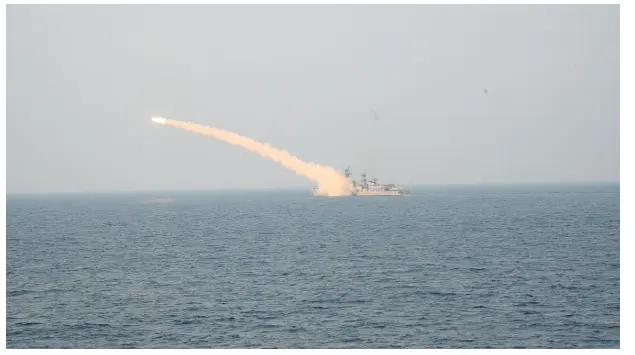
Overview of Exercise Poorvi Lehar (XPOL)
- Exercise Poorvi Lehar (XPOL) is a maritime drill conducted by the Indian Navy along the East Coast, under the operational guidance of the Flag Officer Commanding-in-Chief, Eastern Naval Command.
- The primary objective of the exercise is to validate procedures aimed at assessing the Indian Navy's readiness to address maritime security challenges in the region effectively.
- XPOL involves the participation of a wide array of naval assets, including ships, submarines, aircraft, and special forces, showcasing the comprehensive capabilities of the Indian Navy.
- The exercise unfolds in multiple phases, encompassing combat training in realistic scenarios during the Tactical Phase and the successful execution of various firings during the Weapon Phase, underscoring the Indian Navy's proficiency in delivering ordnance accurately.
- The operation of aircraft from various locations ensures near-continuous Maritime Domain Awareness across the Area of Operations, enhancing situational awareness and operational effectiveness.
- Beyond the assets from the Eastern Naval Command, XPOL also sees the involvement of resources from the Indian Air Force, Andaman & Nicobar Command, and the Coast Guard, demonstrating a high level of interoperability among the services.
- By simulating realistic conditions, the exercise imparts valuable lessons to participating forces, augmenting their readiness to tackle maritime challenges effectively in the region.
Source: PIB
Summit of the Future
In News: The UN Secretary-General has recently emphasized that the reform of multilateral development banks (MDBs) will emerge as a significant focus at the upcoming Summit of the Future.
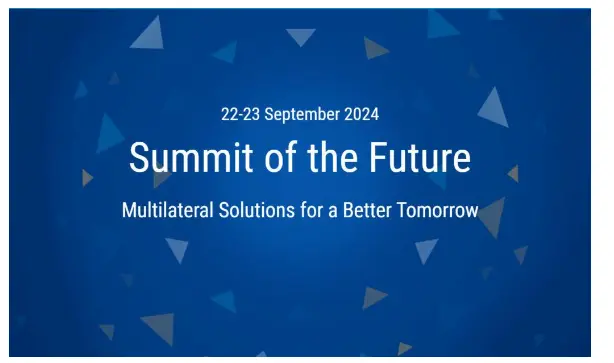
Overview of the Summit of the Future
- The Summit of the Future is a significant high-level event aimed at convening world leaders to establish a new international consensus on improving the present and safeguarding the future.
- It serves as a pivotal moment to address the erosion of trust and showcase the effectiveness of international cooperation in tackling current and emerging challenges.
- This high-level gathering will bring together a diverse array of stakeholders, including UN Member States, UN agencies, NGOs, CSOs, academic institutions, the private sector, and youth, under the overarching theme of 'Summit of the Future: Multilateral Solutions for a Better Tomorrow.'
- The primary objective is to build upon the outcomes of the Sustainable Development Goal (SDG) Summit and formulate an action-oriented Pact for the Future, aimed at accelerating progress towards achieving the Sustainable Development Goals.
- The centerpiece of this endeavor is the development of an action-oriented outcome document known as the Pact for the Future, which will be negotiated and endorsed by countries leading up to and during the Summit in September 2024.
- The Summit of the Future is structured around five key targets agreed upon by UN Member States:
- Reaffirming the principles outlined in the UN Charter.
- Reinvigorating multilateralism to address global challenges effectively.
- Enhancing the implementation of existing commitments towards sustainable development.
- Identifying and agreeing upon solutions to emerging challenges.
- Restoring trust among nations and stakeholders in the multilateral system.
Source: HT
Mount Erebus
In News: Mount Erebus, an active volcano located in Antarctica, has recently garnered attention due to reports indicating that it is emitting gold dust valued at approximately $6000 per day.

Overview of Mount Erebus: Earth's Southernmost Active Volcano
- Mount Erebus stands as the most southerly active volcano on Earth, located on Ross Island, Antarctica, and was first discovered in 1841 by British explorer Sir James Clark Ross, who named it after his ship, the Erebus.
- With an elevation of approximately 3,794 meters (12,448 feet), Mount Erebus is a stratovolcano, characterized by its conical shape and layers of solidified lava, tephra, and volcanic ash.
- Notably, Mount Erebus is renowned for hosting a persistent lava lake, which has remained active since at least 1972, making it one of the few enduring lava lakes globally.
- The lava lake within Mount Erebus constantly churns and occasionally releases bursts of molten rock in Strombolian eruptions, adding to its dynamic nature.
- Due to its remote location, Mount Erebus is monitored by researchers using satellite technology to track its activity and changes over time.
What is a Stratovolcano?
- Stratovolcanoes are tall, steep, cone-shaped volcanoes that typically have higher peaks compared to flat shield volcanoes.
- They are commonly found above subduction zones and are often part of large volcanic regions like the Ring of Fire surrounding much of the Pacific Ocean.
- Constituting around 60% of Earth's individual volcanoes, stratovolcanoes typically erupt andesite and dacite lavas, which are cooler and more viscous than basalt.
- The viscosity of these lavas allows gas pressures to build up, often leading to explosive eruptions characteristic of stratovolcanoes.
- Comprising approximately equal parts of lava and pyroclastic material, stratovolcanoes exhibit layering, earning them the alternate name of composite volcanoes.
- At their peaks, stratovolcanoes usually feature small craters, which may contain water, ice, or volcanic domes during periods of relative inactivity.
Source: India.com
India's Water Resources and Vulnerability
In News: IMD predicts hotter summer, longer heatwaves from April to June. India must prepare for water stress, shifting from panic reactions to understanding chronic risks. This Earth Day (April 22) is a wake-up call.
India's Water Resources and Vulnerability
Overview
- India supports 18% of the world’s population on just 2.4% of the Earth’s surface area, with a mere 4% of global freshwater resources.
- Approximately half of India's rivers are polluted, and 150 primary reservoirs operate at only 38% of their total live storage capacity.
- The nation leads global groundwater usage, with three-quarters of its districts facing extreme climate events.
Investments in Disaster Preparedness
- Despite these challenges, India has made substantial investments in disaster preparedness. However, the evolving nature of climatic shocks necessitates continuous adaptation strategies.
Shift from Reactive to Proactive Approach
- India must transition from reactive responses to proactive measures, acknowledging the chronic nature of climate risks.
- Climate action requires broad participation across sectors, moving beyond short-term initiatives like sapling plantation drives.
Interconnectedness of Water with Economy
- Water in Agriculture
- Precipitation serves as a primary source of soil moisture, impacting crop irrigation and harvests. Agriculture, employing 45% of the population, remains vulnerable to climate changes.
- Changing monsoon patterns affect crop cultivation and emphasize the need for resilience-building measures.
- Water in Clean Energy Transition
- Water plays a critical role in the global clean energy transition, particularly in green hydrogen production and pumped storage hydropower.
- Addressing climate impacts on hydrometeorological disasters is imperative, with nearly 75% of natural disasters being water-related.
Key Strategies for Ensuring Water Security
- Integrated Water Governance
- India's water governance must consider the nexus between water, food, and energy systems, integrating local evidence and community engagement.
- Judicious Water Use and Reuse
- Prioritizing efficient water use and reuse through water accounting principles is essential for achieving national goals like increasing water use efficiency by 20% by 2025.
- Financial Commitments and Market Innovations
- Greater financial commitments are needed for climate change adaptation in water and agriculture sectors, alongside market innovations like the Green Credit Programme to bridge the adaptation funding gap.
Conclusion
- India's water supply, food security, and clean energy transition efforts are intricately linked to its economy and provide valuable lessons for other water-stressed nations.
- Coherence in water, energy, and climate policies, data-driven baselines for water savings, and new financial instruments are crucial for building a water-secure and climate-resilient economy.
|
UPSC Previous Year Questions Mains (2020) Q. Suggest measures to improve water storage and irrigation system to make its judicious use under depleting scenario. Mains (2015) Q. India is well endowed with fresh water resources. Critically examine why it still suffers from water scarcity. |
Source: TH
Share the article
Edukemy’s Current Affairs Quiz is published with multiple choice questions for UPSC exams
MCQ
Get Latest Updates on Offers, Event dates, and free Mentorship sessions.

Get in touch with our Expert Academic Counsellors 👋
Frequently Asked Questions
UPSC Daily Current Affairs focuses on learning current events on a daily basis. An aspirant needs to study regular and updated information about current events, news, and relevant topics that are important for UPSC aspirants. It covers national and international affairs, government policies, socio-economic issues, science and technology advancements, and more.
UPSC Daily Current Affairs provides aspirants with a concise and comprehensive overview of the latest happenings and developments across various fields. It helps aspirants stay updated with current affairs and provides them with valuable insights and analysis, which are essential for answering questions in the UPSC examinations. It enhances their knowledge, analytical skills, and ability to connect current affairs with the UPSC syllabus.
UPSC Daily Current Affairs covers a wide range of topics, including politics, economics, science and technology, environment, social issues, governance, international relations, and more. It offers news summaries, in-depth analyses, editorials, opinion pieces, and relevant study materials. It also provides practice questions and quizzes to help aspirants test their understanding of current affairs.
Edukemy's UPSC Daily Current Affairs can be accessed through:
- UPSC Daily Current Affairs can be accessed through Current Affairs tab at the top of the Main Page of Edukemy.
- Edukemy Mobile app: The Daily Current Affairs can also be access through Edukemy Mobile App.
- Social media: Follow Edukemy’s official social media accounts or pages that provide UPSC Daily Current Affairs updates, including Facebook, Twitter, or Telegram channels.

